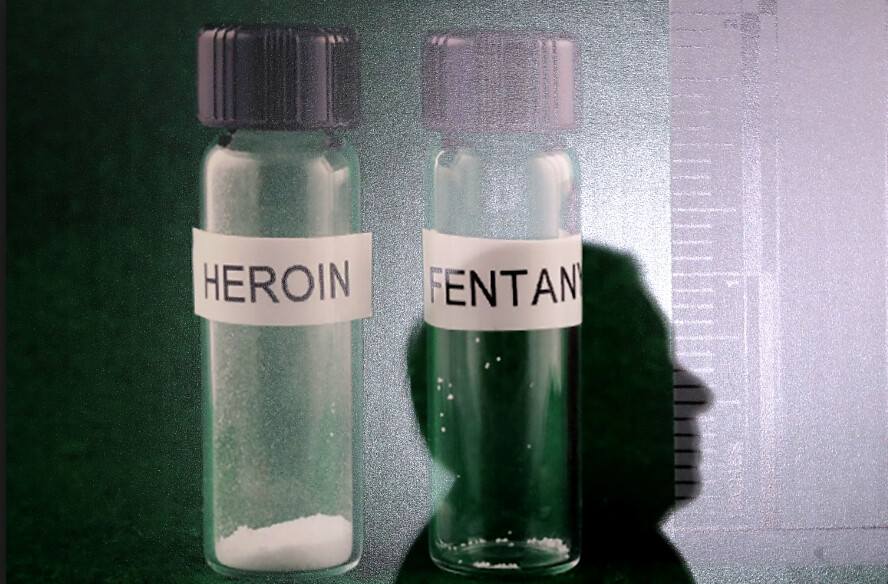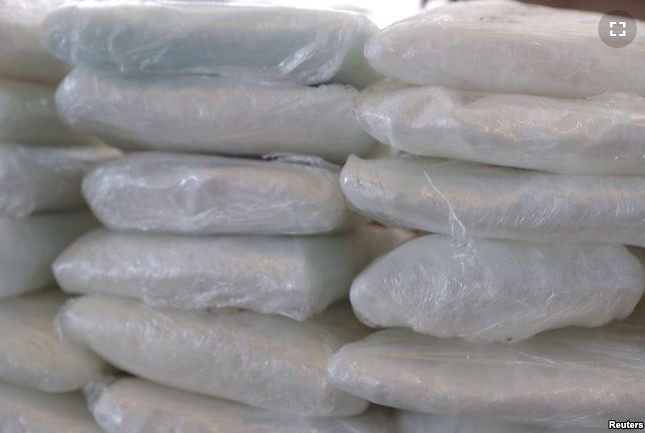Source: Chemistry World
Later today -- members of Congress will be voting on a bill to avoid another government shutdown. I am sure that each of you are pretty tired of hearing about a government shutdown. Making pawns out of federal workers is growing old and needs to be mitigated by Congress. What are the fall outs aside from the obvious -- 0.11% of the U.S. population out of work? Some people try very hard to downplay the hostage crisis with government workers held in between. What the majority of the U.S. population does not realize is that the total effects of an extended government shutdown are very serious. Let me show you a couple of angles to view the present situation which are quite different than what is normally considered by the average person.
Government Shutdown Affects Science?
The other day I was reading the latest issue of the trade journal 'Chemical & Engineering News' which contained a guest editorial titled "A Case For Compromise" by Dr. Willie E. May. Among other disparate and dangerous aspects of a government shutdown, he made the case for three separate areas of science which were greatly devastated (and potentially have long term damage) by the shutdown:
(1) The morale of the finest scientific workforce on this planet. Government scientists are working on critically important problems, including cures for diseases, the safety of our food supply, cybersecurity, and next-generation quantum computers. The current lapse in funding has cut scientists off from their labs and the work that they have devoted their lives to, which could cause many of our best and brightest to move on to different positions. That would be a severe loss for our country.
(2) Research in the world’s best collection of universities. A marked reduction in grant processing and funding drawdowns at agencies such as the National Science Foundation have stalled progress in all scientific fields.
(3) Critical NASA space missions. Delays in work at NASA affect our knowledge of other planets, the stars, and beyond.
(4) US industrial productivity and innovation. For example, work has been brought to a halt at my former agency, NIST, including the world-renowned labs where cutting-edge research has yielded five Nobel Prizes and many other awards. In addition to lacking the results of NIST’s intramural research, US industry does not have access to NIST’s calibration services for precision instruments, 1,200 cataloged standard reference materials, reference data sets that get more than 225,000 downloads per year, and unique user facilities that are in demand 24 hours a day, 365 days a year.
Dr. Willie May is the former Director of the National Institute for Standards and Technology along with the former UnderSecretary of Commerce for Standards and Technology. He is currently the vice president of Research at the Morgan State University. The above excerpt outlines concisely the negative impact a government shutdown would have on science research and technology. The negative reach could be catastrophic. Why?
Imagine if a pharmaceutical company was in the midst of gathering a round of funding to move a drug forward to evaluation by the Food and Drug Administration. Part of that funding might come from the National Institutes of Health (through a specific grant). I wrote about this process briefly in a previous post about government funding pharma drug development (see videos in post). What negative impact could happen if the government shutdown occurred and tied up potential funding for the company used in the example? Quite possibly, the remaining funding from venture capitalist might fall through and disappear.
The timeline on funding is variable when the government is working normally. Insert a government shutdown to put a freeze on all operations and now all other components of that funding could be impacted which could result in research projects being canceled or put on hold. That could hold up progress in developing downstream technology in certain cases. Which is why in the statement above by Dr. Willie May -- the impact on U.S. innovation and technology is right spot on the money.
What About Agriculture?
Above, the negative impact on technology and research was briefly discussed. What about the agriculture sector? In a previous post, I alluded to the negative impact a government shutdown might have on federal agencies. This week, a brief in Politico Agriculture highlights the potential negative impact on the agriculture sector a government shutdown could have:
Another prolonged shutdown would be especially painful for agriculture, and it's unclear if USDA could take steps to mitigate some of the headaches that accompanied the previous closures. If agencies' work on commodity data publications (including a large backlog from December and January) is frozen, it could leave crop farmers in the dark once again as they make planting decisions for the year.
The last sentence tells all -- in that the government shutdown which occurred over Christmas and into the New Year has already had a negative impact on farmer's ability to plan for the upcoming season. And yes, that is tied into the crops which produce the food which is sold in the store. Your grocery store, the food which potentially sits on your shelves and in your refrigerator. Do I have your attention now?
Government workers need to work. It's more obvious than that. We (the American people) need government workers to work and for the government agencies to work on a day to day basis. I did not even get a chance to discuss the potential negative impacts on agencies like NASA - with hundreds of millions (if not billions) of research equipment floating in the skies above us which rely on personnel here on Earth to run, collect, and process data. Not to mention, the scientists needed to process and transmit that data back into policy or new technology to serve the U.S. population. Again, government workers need to work.
Related Blog Posts:
What does a Government Shutdown look like?
What is the difference between General Anxiety Disorder and Trump Anxiety Disorder?
Dimensional Analysis Of Statistics And Large Numbers - Index Of Blog Posts
Science Topics, Thoughts, and Parameters Regarding Science, Politics, And The Environment!






